
 Observation
Observation 
 Site's Webmaster Observations' Page
Site's Webmaster Observations' Page
That page is dedicated to the observations made by this site's webmaster. Because he is not a instrumental observer but a observer of constellations or he is interested into theory in astronomy instead, the site's webmaster is using a small 60-millimeter refractor only, or small binoculars. He occasionally can reassemble his old 4.5-inch Newtonian reflector too. In terms of astrophotography, he uses a astrowebcam or a compact digital camera, or even a smartphone. The site's webmaster observes either from its home, under a suburban moderately dark sky, or from varied outdoor locations with better skies -or not- a one the observation location of the local astronomy club. In terms of deep sky objects, the webmaster uses a personal, digital technique of astronomical drawing

 Moon
Moon
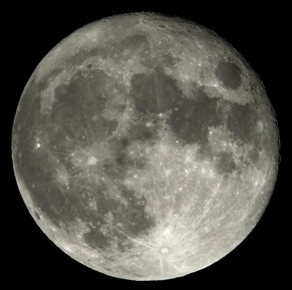 | Moon one day after full through a compact digital camera handheld behind the ocular ((Nikon S3100 compact digital camera handheld at the 20-mm ocular of a Perl 60mm refractor (yielding a 35x power); picture stacked with RegiStax and processed into a image editor; home observatory; turbulence was present). picture site 'Amateur Astronomy' webmaster |
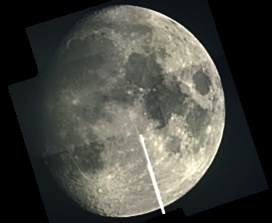 | A imperfect attempt to stitch a waxing gibbous Moon (Perl 60mm refractor and a Perl Echorius 1.3 Webcam; home observatory). picture site 'Amateur Astronomy' webmaster |
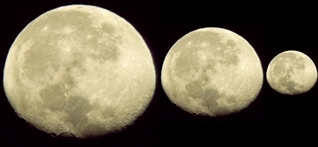 | The Moon on September 30th, 2015, 2 days after full using a compact digital camera handheld behind the ocular (three pictures are a variation of the original view) (Nikon S3100 compact digital camera handheld at the 20-mm ocular of a Perl 60mm refractor (yielding a 35x power); picture stacked with RegiStax and processed into a image editor; home observatory). picture site 'Amateur Astronomy' webmaster |
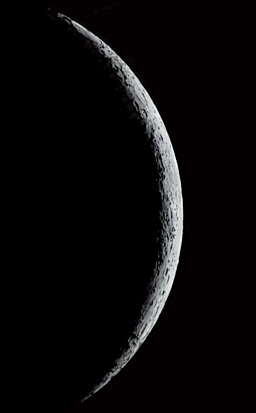 | The two-day old waxing crescent with eastern seas along the limb! (Perl 60mm refractor and a Perl Echorius 1.3 Webcam; home observatory). picture site 'Amateur Astronomy' webmaster |
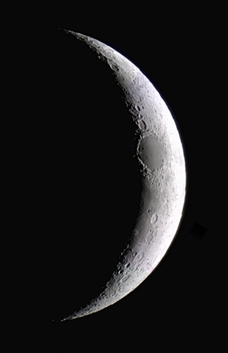 | A fine 3-day waxing crescent! (Perl 60mm refractor and a Perl Echorius 1.3 Webcam; home observatory). picture site 'Amateur Astronomy' webmaster |
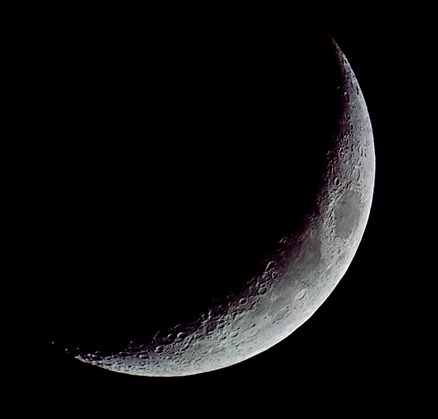 | A fine crescent with numerous sites of interest all along the terminator! (Perl 60mm refractor and a Perl Echorius 1.3 Webcam; image stitched from 5 videos; home observatory). picture site 'Amateur Astronomy' webmaster |
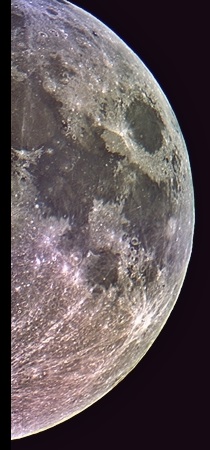 | two pictures stitched give that view of half of the Full Moon! (Perl 60mm refractor and a Perl Echorius 1.3 Webcam; picture stacked with RegiStax, stitched and processed into a image editor; home observatory). picture site 'Amateur Astronomy' webmaster |
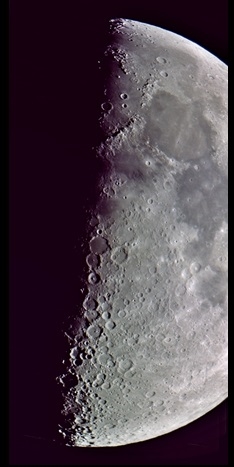 | A fine stitched mosaic of three pictures capturing the First Quarter! (Perl 60mm refractor and a Perl Echorius 1.3 Webcam; picture stacked with RegiStax and processed into a image editor; home observatory). picture site 'Amateur Astronomy' webmaster |
 | A fine view of the southwestern part of Moon two days before First Quarter (Perl 60mm refractor and a Perl Echorius 1.3 Webcam; picture stacked with RegiStax and processed into a image editor; home observatory). picture site 'Amateur Astronomy' webmaster |
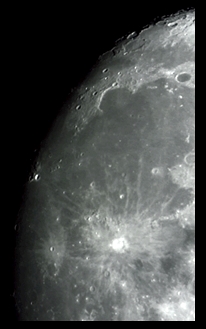 | The western regions of the Moon three days before Full Moon, from Sinus Iridum to Kepler as Aristarchus Crater and the Schröter Valley are seen on the terminator (Perl 60mm refractor and a Perl Echorius 1.3 Webcam; home observatory). picture site 'Amateur Astronomy' webmaster |
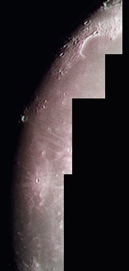 | The western regions of the Moon from Sinus Iridum to below Kepler (Perl 60mm refractor and a Perl Echorius 1.3 Webcam; home observatory). picture site 'Amateur Astronomy' webmaster |
 | A fine view of the western limb of a waxing gibbous Moon, from North of Sinus Iridum to the Oceanus Procellarum, South of the Copernicus crater (Perl 60mm refractor and a Perl Echorius 1.3 Webcam; home observatory). picture site 'Amateur Astronomy' webmaster |
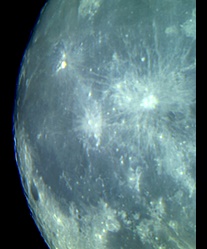 | A fine view of the western areas of the Moon, from Aristarchus to Mare Humorum (Perl 60mm refractor and a Perl Echorius 1.3 Webcam; home observatory). picture site 'Amateur Astronomy' webmaster |
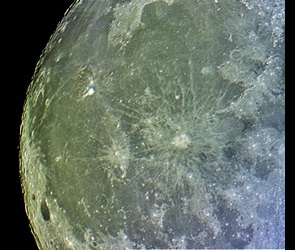 | two pictures stitched give that view of Oceanus Procellarum at the time of the Full Moon! (Perl 60mm refractor and a Perl Echorius 1.3 Webcam; picture stacked with RegiStax, stitched and processed into a image editor; home observatory). picture site 'Amateur Astronomy' webmaster |
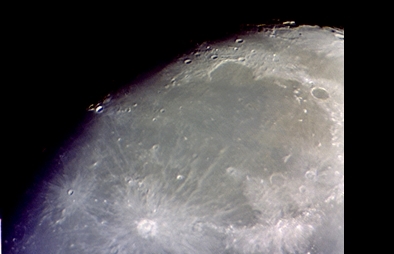 | A other view of the northwestern regions of the Moon! (Perl 60mm refractor and a Perl Echorius 1.3 Webcam; home observatory). picture site 'Amateur Astronomy' webmaster |
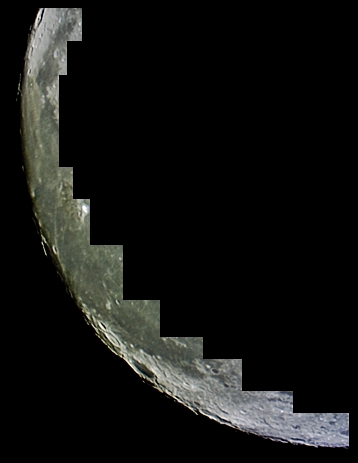 | A good part of the western limb of the Moon is seen there, from North of Sinus Iridum to the Grimaldi Crater and beyond! (Perl 60mm refractor and a Perl Echorius 1.3 Webcam; home observatory). picture site 'Amateur Astronomy' webmaster |
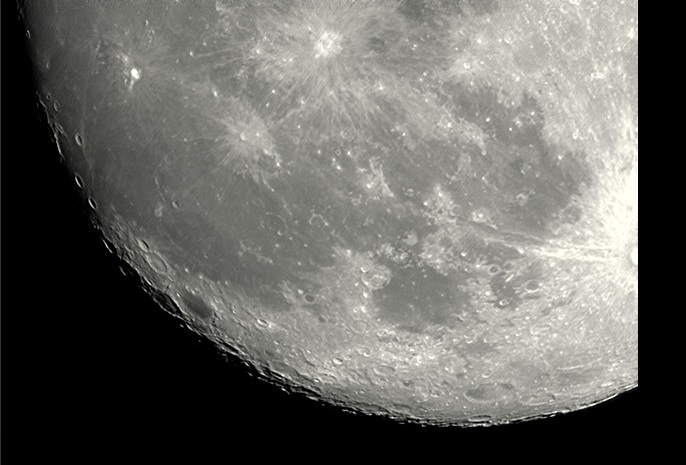 | 2 days before Full Moon, a good view of craters along the terminator from the half buried Eddington to the area of Cavalerius, Hevelius, and Grimaldi, Riccioli and Rocca. Main lunar rayed craters are also well seen (Perl 60mm refractor and a Perl Echorius 1.3 Webcam; home observatory). picture site 'Amateur Astronomy' webmaster |
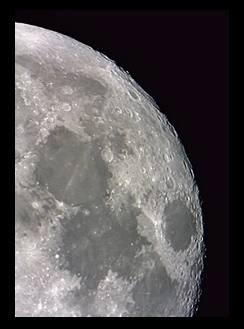 | The northeastern limb of the Moon one day after Full Moon. Mare Humboldtianum is well seen top right! (Perl 60mm refractor and a Perl Echorius 1.3 Webcam; picture stacked with RegiStax and edited with a image editor; home observatory). picture site 'Amateur Astronomy' webmaster |
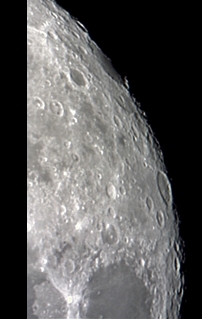 | More Mare Humboldtianum and the Gauss Crater to the right on a Moon one day after full! (Perl 60mm refractor and a Perl Echorius 1.3 Webcam; picture stacked with RegiStax and edited with a image editor; home observatory; turbulence was present). picture site 'Amateur Astronomy' webmaster |
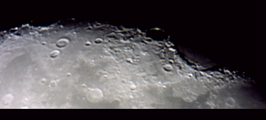 | Two days after Full Moon, the terminator is reaching to the western rim of Mare Crisium! (Perl 60mm refractor and a Perl Echorius 1.3 Webcam; picture stacked with RegiStax and edited with a image editor; home observatory). picture site 'Amateur Astronomy' webmaster |
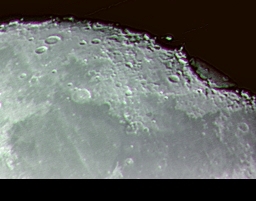 | A other view of the same regions with the terminator reaching to the western wall of Mare Crisium (Perl 60mm refractor and a Perl Echorius 1.3 Webcam; home observatory). picture site 'Amateur Astronomy' webmaster |
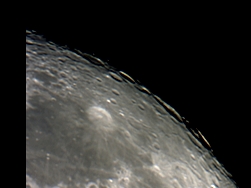 | One day after Full Moon, the terminator is illuminating craters on the eastern limb, south of Mare Crisium! (Perl 60mm refractor and a Perl Echorius 1.3 Webcam; picture stacked with RegiStax and edited with a image editor; home observatory; turbulence was present). picture site 'Amateur Astronomy' webmaster |
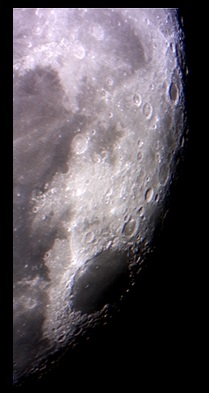 | One day after Full Moon, a fine view of Mare Crisium and areas North of it! (Perl 60mm refractor and a Perl Echorius 1.3 Webcam; picture stacked with RegiStax and edited with a image editor; home observatory; turbulence was present). picture site 'Amateur Astronomy' webmaster |
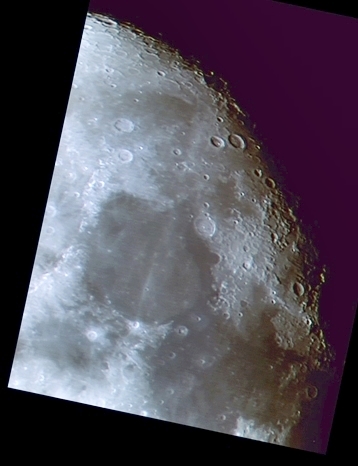 | Waning gibbous Moon three days after full with a fine northeastern limb from Hercules and Atlas craters (up) down to the ridge of Mare Crisium (down) (Perl 60mm refractor and a Perl Altaos 0.35 Webcam; picture stacked with RegiStax, colorized into medium Agfa and processed into a image editor; home observatory). picture site 'Amateur Astronomy' webmaster |
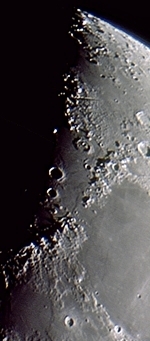 | A fine view of Mts Apenninus and Mts Caucasus region, with Vallis Alpes, North one day before First Quarter (Perl 60mm refractor and a Perl Echorius 1.3 Webcam; picture stacked with RegiStax and processed into a image editor; home observatory). picture site 'Amateur Astronomy' webmaster |
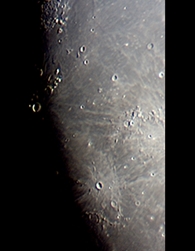 | The area West of Oceanus Procellarum, with Montes Carpatus center right. Moon was 3 days before full (Perl 60mm refractor and a Perl Echorius 1.3 Webcam; picture stacked with RegiStax and processed into a image editor; home observatory; sky was steady in terms of seeing). picture site 'Amateur Astronomy' webmaster |
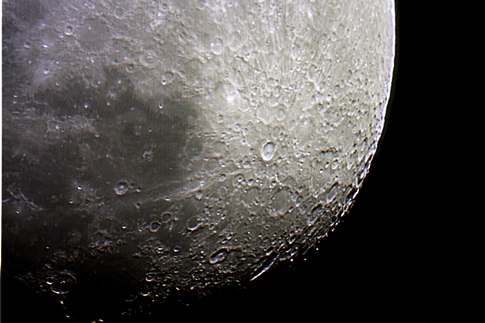 | Fine Tycho area on a waxing gibbous Moon three day after First Quarter (Perl 60mm refractor and a Perl Echorius 1.3 Webcam; home observatory). picture site 'Amateur Astronomy' webmaster |
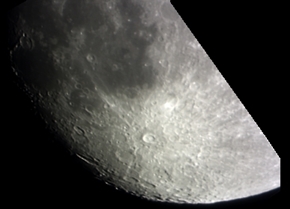 | Southwestern waxing gibbous Moon (Perl 60mm refractor and a Perl Echorius 1.3 Webcam; home observatory). picture site 'Amateur Astronomy' webmaster |
 | A other view of Mare Humorum with Schiller Crater at the lower right. Moon was 3 days before full (Perl 60mm refractor and a Perl Echorius 1.3 Webcam; picture stacked with RegiStax and processed into a image editor; home observatory; sky was steady in terms of seeing). picture site 'Amateur Astronomy' webmaster |
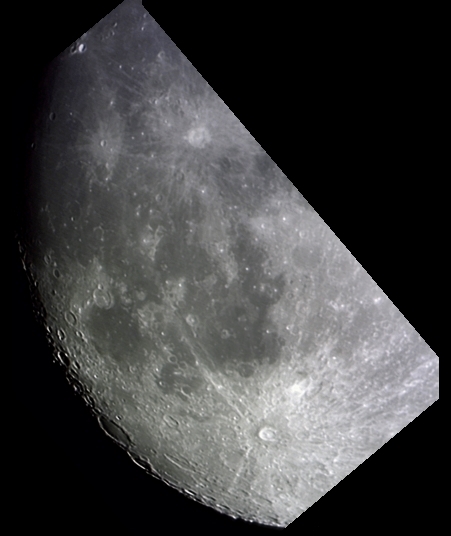 | More southwestern areas, with the fine Schickard Crater and other craters on the limb (Perl 60mm refractor and a Perl Echorius 1.3 Webcam; home observatory). picture site 'Amateur Astronomy' webmaster |
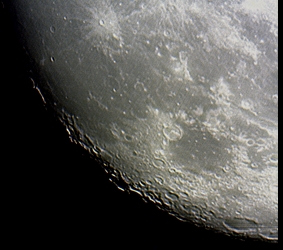 | More southwestern areas somewhat more North than the previous. The picture was taken two days before Full Moon. The Schickard Crater is seen at the lower right (Perl 60mm refractor and a Perl Echorius 1.3 Webcam; home observatory). picture site 'Amateur Astronomy' webmaster |
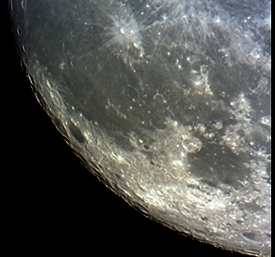 | The same region than above as Moon has moved to one day before Full Moon! Beyond the dark plain of Grimaldi, near center left, all a series of craters are seen on the lunar limb (Perl 60mm refractor and a Perl Echorius 1.3 Webcam; home observatory). picture site 'Amateur Astronomy' webmaster |
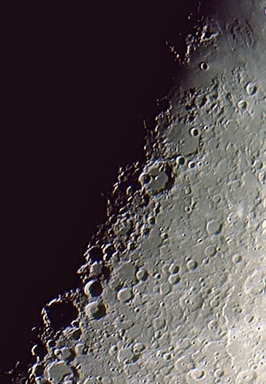 | A whole series of fine craters are running along the terminator one day before First Quarter, from the Hipparchus to the Walter area (Perl 60mm refractor and a Perl Echorius 1.3 Webcam; picture stacked with RegiStax and processed into a image editor; home observatory; sky was steady in terms of seeing). picture site 'Amateur Astronomy' webmaster |
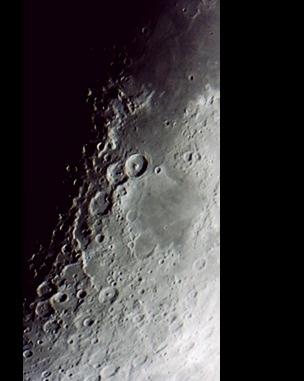 | A fine view of the area North and South Mare Nectaris, two days before First Quarter (Perl 60mm refractor and a Perl Echorius 1.3 Webcam; picture stacked with RegiStax and processed into a image editor; home observatory). picture site 'Amateur Astronomy' webmaster |
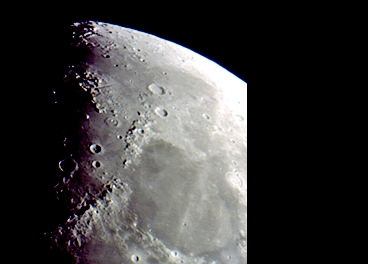 | A fine view of lunar northern areas at First Quarter (Perl 60mm refractor and a Perl Echorius 1.3 Webcam; picture stacked with RegiStax and processed into a image editor; home observatory). picture site 'Amateur Astronomy' webmaster |
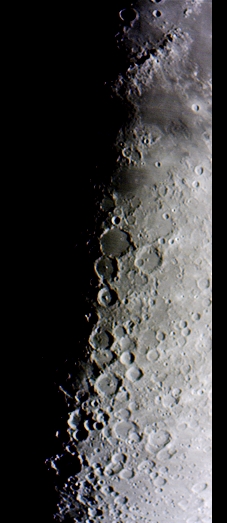 | A fine view, at First Quarter, of regions North and South of the Ptolemy Crater area (Perl 60mm refractor and a Perl Echorius 1.3 Webcam; picture stacked with RegiStax and processed into a image editor; home observatory). picture site 'Amateur Astronomy' webmaster |
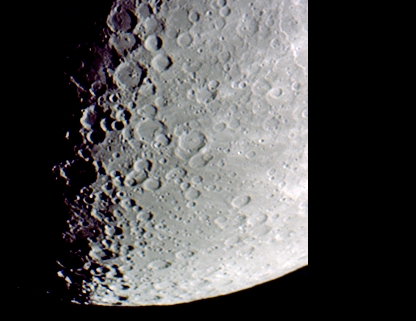 | A fine view of lunar southern areas at First Quarter (Perl 60mm refractor and a Perl Echorius 1.3 Webcam; picture stacked with RegiStax and processed into a image editor; home observatory). picture site 'Amateur Astronomy' webmaster |
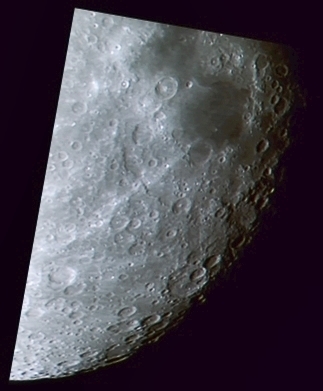 | Waning gibbous Moon three days after full with a fine landscape southeast of Mare Nectaris, of which a neat cut of Rheita Valley close to the vast Janssen Crater (Perl 60mm refractor and a Perl Altaos 0.35 Webcam; picture stacked with RegiStax, colorized into medium Agfa and processed into a image editor; home observatory). picture site 'Amateur Astronomy' webmaster |
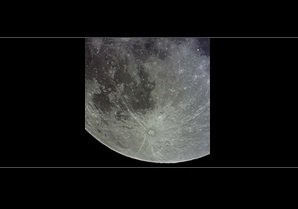 | Tycho crater's rays at Full Moon (Perl 60mm refractor and a Perl Echorius 1.3 Webcam; home observatory). picture site 'Amateur Astronomy' webmaster |
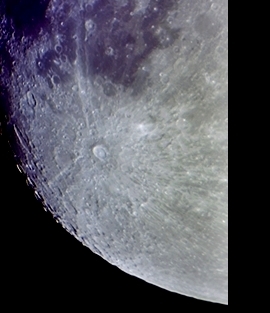 | A more detailed view of Tycho crater's rays (Perl 60mm refractor and a Perl Echorius 1.3 Webcam; home observatory). picture site 'Amateur Astronomy' webmaster |
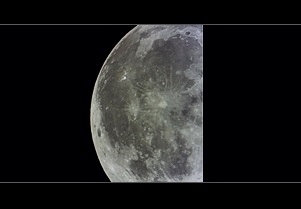 | A other region of rayed craters, with Copernicus and Kepler craters at Full Moon (Perl 60mm refractor and a Perl Echorius 1.3 Webcam; home observatory). picture site 'Amateur Astronomy' webmaster |
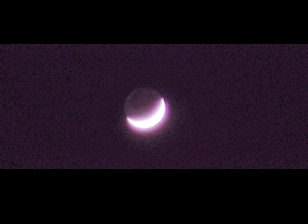 | Ashen light with a 3-day old waxing crescent (Nikon S3100 compact digital camera; outdoor observation location). picture site 'Amateur Astronomy' webmaster |
 | Ashen light with a 1-day old waxing crescent (Nikon S3100 compact digital camera; outdoor observation location). picture site 'Amateur Astronomy' webmaster |
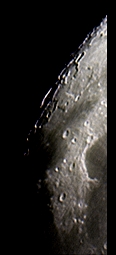 | Craters on the limb northwest of Sinus Iridum at Moon two days before full. Babbage, Pythagoras and Anaximender B craters are seen (Perl 60mm refractor and a Perl Echorius 1.3 Webcam; home observatory). picture site 'Amateur Astronomy' webmaster |
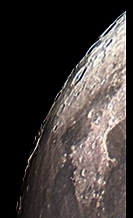 | One day before full, the northwestern limb of the Moon is showing extreme landscapes (Perl 60mm refractor and a Perl Echorius 1.3 Webcam; home observatory). picture site 'Amateur Astronomy' webmaster |
 | More extreme landscapes one day before full on the western limb of the Moon. A series of fin craters! (Perl 60mm refractor and a Perl Echorius 1.3 Webcam; home observatory). picture site 'Amateur Astronomy' webmaster |
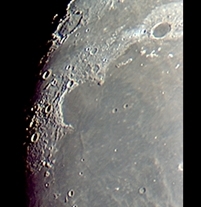 | A fine view of the area of Sinus Iridum as Plato is at the upper right and Montes Recti in-between. Moon was 3 days before full (Perl 60mm refractor and a Perl Echorius 1.3 Webcam; picture stacked with RegiStax and processed into a image editor; home observatory; sky was steady in terms of seeing). picture site 'Amateur Astronomy' webmaster |
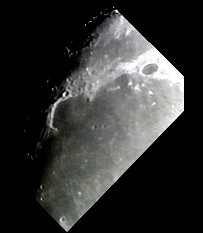 | Sinus Iridum, with the Herschel Crater, North (Perl 60mm refractor and a Perl Echorius 1.3 Webcam; home observatory). picture site 'Amateur Astronomy' webmaster |
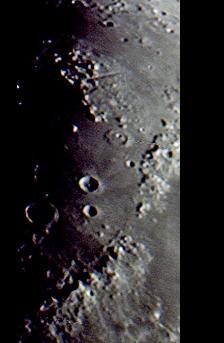 | A close-up to the Vallis Alpes area! (Perl 60mm refractor and a Perl Echorius 1.3 Webcam; picture stacked with RegiStax and processed into a image editor; home observatory). picture site 'Amateur Astronomy' webmaster |
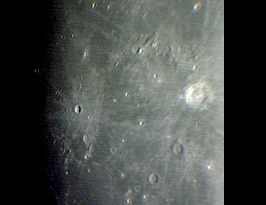 | Kepler Crater West of Copernicus Crater and Mts Carpatus seen right (Perl 60mm refractor, Barlow 1.5, and a Perl Echorius 1.3 Webcam; home observatory). picture site 'Amateur Astronomy' webmaster |
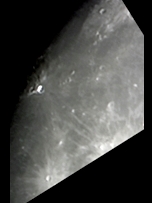 | The bright Aristarchus Crater, which hints to the Schröter Valley (Perl 60mm refractor and a Perl Echorius 1.3 Webcam; home observatory). picture site 'Amateur Astronomy' webmaster |
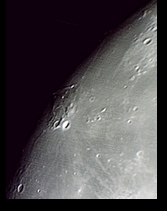 | A remarkably well seen Schröter Valley above both Herodotus and Aristarchus craters, as Mts Harbinger and Prinz crater are well seen right of the area! That fine view was obtained despite a bad seing (Perl 60mm refractor and a Perl Echorius 1.3 Webcam with a 1.5 Barlow; home observatory). picture site 'Amateur Astronomy' webmaster |
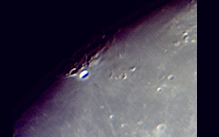 | A other view of the Aristarchus crater area (Perl 60mm refractor and a Perl Echorius 1.3 Webcam; home observatory). picture site 'Amateur Astronomy' webmaster |
 | More about the Aristarchus Crater area, with a better view of Mts Harbinger (Perl 60mm refractor and a Perl Echorius 1.3 Webcam with a 1.5 Barlow; home observatory). picture site 'Amateur Astronomy' webmaster |
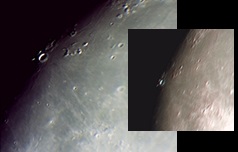 | The Aristarchus Crater area again (Perl 60mm refractor and a Perl Echorius 1.3 Webcam; left with a 1.5 Barlow; home observatory). picture site 'Amateur Astronomy' webmaster |
 | The Aristarchus Crater area as seen under a about full moon light (Perl 60mm refractor and a Perl Echorius 1.3 Webcam; home observatory). picture site 'Amateur Astronomy' webmaster |
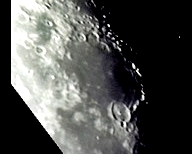 | Mare Humorum with the Gassendi Crater (Perl 60mm refractor, Barlow 1.5, and a Perl Echorius 1.3 Webcam; home observatory). picture site 'Amateur Astronomy' webmaster |
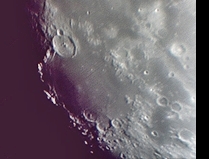 | A similar view to the previous as taken through a Barlow 1.5 (Perl 60mm refractor, Barlow 1.5, and a Perl Echorius 1.3 Webcam; home observatory; sky was steady in terms of seeing). picture site 'Amateur Astronomy' webmaster |
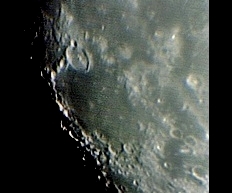 | Another view of Mare Humorum, with more hints about the sea floor (Perl 60mm refractor, Barlow 1.5, and a Perl Echorius 1.3 Webcam; home observatory). picture site 'Amateur Astronomy' webmaster |
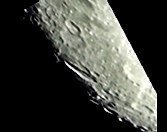 | The Schiller Crater (Perl 60mm refractor and a Perl Echorius 1.3 Webcam; home observatory). picture site 'Amateur Astronomy' webmaster |
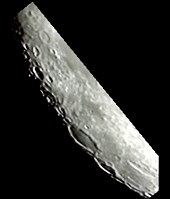 | The Schickard Crater (Perl 60mm refractor and a Perl Echorius 1.3 Webcam; home observatory). picture site 'Amateur Astronomy' webmaster |
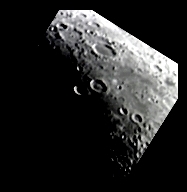 | The area of Hercules and Atlas craters at left and center of the image respectively (Perl 60mm refractor and a Perl Echorius 1.3 Webcam; home observatory). picture site 'Amateur Astronomy' webmaster |
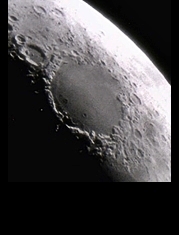 | Mare Crisium seen on a 3-day waxing crescent (Perl 60mm refractor and a Perl Echorius 1.3 Webcam; home observatory). picture site 'Amateur Astronomy' webmaster |
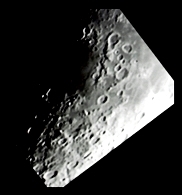 | Mare Nectaris as viewed on the lunar limb (Perl 60mm refractor and a Perl Echorius 1.3 Webcam; home observatory). picture site 'Amateur Astronomy' webmaster |
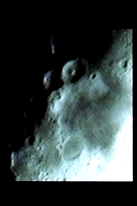 | The area of Theophilus, Cyrillus, and Catharina craters (Perl 60mm refractor and a Perl Altaos 0.35 Webcam; picture stacked with RegiStax and edited with a image editor; home observatory). picture site 'Amateur Astronomy' webmaster |
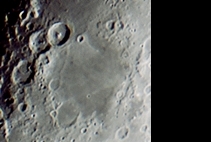 | A neatly better view of Theophilus, Cyrillus, and Catharina craters (Perl 60mm refractor and a Perl Echorius 1.3 Webcam; picture stacked with RegiStax and processed into a image editor; home observatory). picture site 'Amateur Astronomy' webmaster |
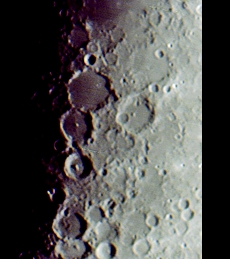 | A close-up to the Ptolemy Crater area! (Perl 60mm refractor and a Perl Echorius 1.3 Webcam; picture stacked with RegiStax and processed into a image editor; home observatory). picture site 'Amateur Astronomy' webmaster |
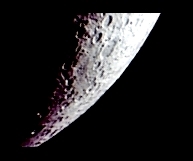 | The area of Rheita Valley (Perl 60mm refractor, Barlow 1.5, and a Perl Echorius 1.3 Webcam; picture stacked with RegiStax and edited with a image editor; home observatory). picture site 'Amateur Astronomy' webmaster |
About Astrowebcams and Picture Processing
Since astrophotography turned to digital, amateur astronomers, among other choices, turned to webcams. As the videos they capture are stack-processed, that provides for pictures with a fine resolution. Astronomy manufacturers gradually got into the market and are now proposing varied dedicated astrowebcams as numerous freewares exist in terms of picture processing, hence the possibilities are many. Here are some hints we thought about, from our own practice (NOTE! with some freeware video converters, a tendancy is to a online install, with some unwanted softwares also installed on your Internet browser. So, take care of that!). Two main freewares exists in terms of stacking, RegiStax and IRIS, with the first of a relatively ease of use and the second harder but possibly bringing to better images:
- RegiStax, a well-known stacking software in the community -as it is also provided by Celestron like the image processing software with its webcam systems- may be demanding in terms of memory when it comes to process such large-size videos. Thus it may be useful to convert the video file used into a non-Codec AVI format using the VirtualDub freeware by Avery Lee (as, on a other hand, that format is the one useable in the Iris stacking software, the other software used in the amateur astronomy community, that is of interest). A additional improvement may be to use PIPP (Planetary Imaging PreProcessor), which is a advanced tool pre-processing AVI videos. It is pre-aligning the .avi file's frames, which make easier the work of RegiStax. All types of .avi files may be processed like, for example, those translated into non-Codec Avi through VirtualDub)
- IRIS is harder to use but may yield better images. IRIS has to be used with the non-Codec AVI format, thus necessitating using the VirtualDub freeware by Avery Lee. IRIS is hard to use as scripts are useful, like those provided, for example, at Sébastien Leboutte's site (a site in French). A subtle trick is to uncheck the Remove Duplicated Images in the AVI Conversion menu, forcing IRIS to process the .avi file whole number of frames. That may bring better results still
You will note that it is difficult to rationalize the processing of videos. Some will bring good results as directly processed into RegiStax as others like non-Codec AVIs, or some others still like non-Codec AVIs added with a PIPP processing. Learning to master such astrophotography tools belongs to a try-and-learn process only as such process will work well with a type of astronomical pictures and not with a other. A variable may be the number of alignpoints in Registax, for example (the lesser the better -down to two only or even one- for small planetary pictures included). Pre-aligning a video with the PIPP software is also a good option
 Sun
Sun
 | The Sun as of Feb. 16, 2013 (Nikon S3100 compact digital camera with 8x21 binoculars equipped with a solar filter in sheet ahead one objective of the binoculars (and the other one occulted); the picture was colorized into yellow; home observatory). picture site 'Amateur Astronomy' webmaster |
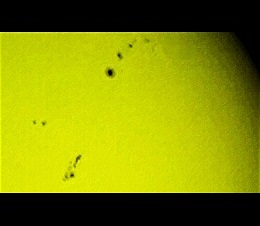 | Sunspots as of Apr. 14, 2014 as such a activity, part of a larger area still, is remarkable in the otherwise feeble solar cycle n° 24 (Perl 60mm refractor with a solar filter in sheet at the instrument's aperture, and a Perl Altaos 0.35 Webcam; picture stacked with RegiStax and colorized yellow; home observatory). picture site 'Amateur Astronomy' webmaster |
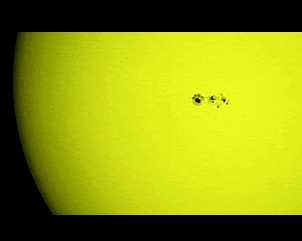 | Some renewed activity on the Sun (March 12th, 2015) after a period of calm (Perl 60mm refractor with a solar filter in sheet at the instrument's aperture, and a Perl Echorius 1.3 Webcam; picture stacked with RegiStax, edited and colorized with a image editor; home observatory). picture site 'Amateur Astronomy' webmaster |
 | A fine view of the Sun, with some sunspots and faculae, on Apr. 5th, 2015! (Perl 60mm refractor with a solar filter in sheet at the instrument's aperture, and a Perl Echorius 1.3 Webcam; picture stacked with RegiStax, edited and colorized with a image editor; home observatory). picture site 'Amateur Astronomy' webmaster |
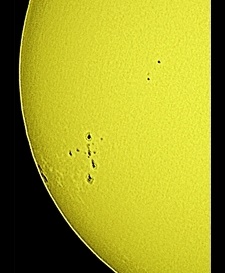 | Sun keeping active with a fine view of sunspots and faculae on Apr. 13th, 2015! (Perl 60mm refractor with a solar filter in sheet at the instrument's aperture, and a Perl Echorius 1.3 Webcam; picture stacked with RegiStax, edited and colorized with a image editor; home observatory). picture site 'Amateur Astronomy' webmaster |
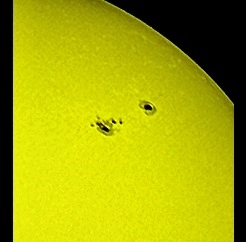 | Large sunspots on Jun. 25th, 2015! (Perl 60mm refractor with a solar filter in sheet at the instrument's aperture, and a Perl Echorius 1.3 Webcam; picture stacked with RegiStax, edited and colorized with a image editor; home observatory). picture site 'Amateur Astronomy' webmaster |
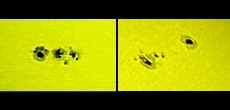 | Detailed views of sunspots dotting the Sun on March 12th, and June 25th, 2015 respectively (Perl 60mm refractor with a solar filter in sheet at the instrument's aperture, and a Perl Echorius 1.3 Webcam; picture stacked with RegiStax, edited and colorized with a image editor; home observatory). picture site 'Amateur Astronomy' webmaster |
 | A detailed view of the evolution of a sunspot dotting the Sun, June 24th-25th, 2015 (Perl 60mm refractor with a solar filter in sheet at the instrument's aperture, and a Perl Echorius 1.3 Webcam; picture stacked with RegiStax, edited and colorized with a image editor; home observatory). picture site 'Amateur Astronomy' webmaster |
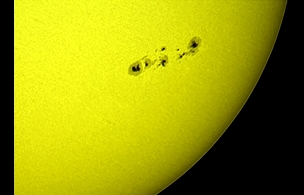 | A large sunspot area at Sun seen on September 29th, 2015 (Perl 60mm refractor with a solar filter in sheet at the instrument's aperture, and a Perl Echorius 1.3 Webcam; picture stacked with RegiStax, edited and colorized with a image editor; home observatory). picture site 'Amateur Astronomy' webmaster |
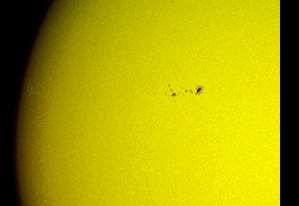 | A lesser sunspot seen at Sun on September 29th, 2015 (Perl 60mm refractor with a solar filter in sheet at the instrument's aperture, and a Perl Echorius 1.3 Webcam; picture stacked with RegiStax, edited and colorized with a image editor; home observatory). picture site 'Amateur Astronomy' webmaster |
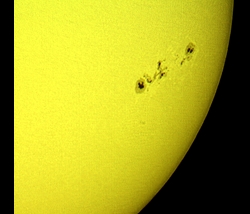 | The large sunspot area seen the day before at Sun, is now moving to the limb on September 30th, 2015 (Perl 60mm refractor with a solar filter in sheet at the instrument's aperture, and a Perl Echorius 1.3 Webcam; picture stacked with RegiStax, edited and colorized with a image editor; home observatory). picture site 'Amateur Astronomy' webmaster |
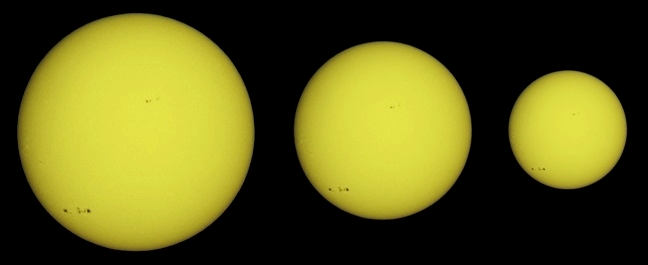 | The Sun seen on September 30th, 2015 using a compact digital camera handheld behind the ocular (three pictures are a variation of the original view) (Nikon S3100 compact digital camera handheld at the 20-mm ocular of a Perl 60mm refractor with a solar filter in sheet at the instrument's aperture (yielding a 35x power); picture stacked with RegiStax, edited and colorized with a image editor; home observatory). picture site 'Amateur Astronomy' webmaster |
 | Both the Sep. 29 and Sep. 30, 2015 sunspots areas seen in their evolution (Perl 60mm refractor with a solar filter in sheet at the instrument's aperture, and a Perl Echorius 1.3 Webcam; picture stacked with RegiStax, edited and colorized with a image editor; home observatory). picture site 'Amateur Astronomy' webmaster |
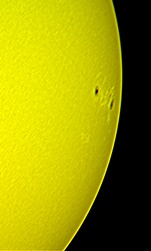 | Image of a quiet Sun by Mar. 17, 2016 (Perl 60mm refractor with a solar filter in sheet at the instrument's aperture, and a Perl Echorius 1.3 Webcam; home observatory). picture site 'Amateur Astronomy' webmaster |
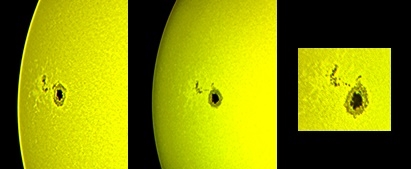 | A important sunspot on the Sun by Apr. 9-10, 2016 as that sunspot eventually crossed the whole solar disk (Perl 60mm refractor with a solar filter in sheet at the instrument's aperture, and a Perl Echorius 1.3 Webcam; home observatory). picture site 'Amateur Astronomy' webmaster |
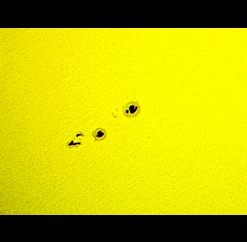 | A sunspot group is seen on the Sun by Jul. 16, 2016 after a blank Sun since about one month! (Perl 60mm refractor with a solar filter in sheet at the instrument's aperture, and a Perl Echorius 1.3 Webcam; home observatory). picture site 'Amateur Astronomy' webmaster |
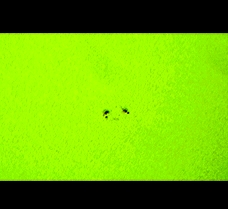 | A sunspot typical of a weak Sun (Perl 60mm refractor with a solar filter in sheet at the instrument's aperture, and a Perl Echorius 1.3 Webcam; home observatory). picture site 'Amateur Astronomy' webmaster |
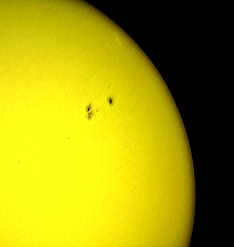 | A fine sunspot group and a original faculae area (Perl 60mm refractor with a solar filter in sheet at the instrument's aperture, and a Perl Echorius 1.3 Webcam; home observatory). picture site 'Amateur Astronomy' webmaster |
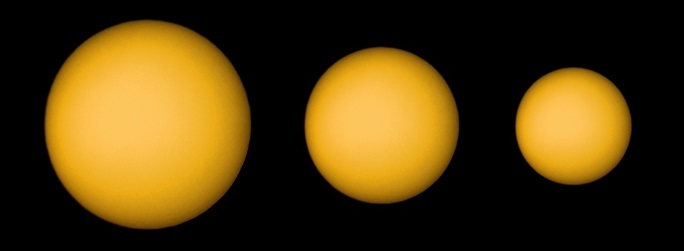 | The Sun in a remarkable large lull of being devoided of sunspots, on November 20th, 2019, seen using a compact digital camera handheld behind the ocular (three variations from a same picture; Nikon S3100 compact digital camera handheld at the 20-mm ocular of a Perl 60mm refractor with a solar filter in sheet at the instrument's aperture (yielding a 35x power); picture edited and colorized with a image editor; home observatory). picture site 'Amateur Astronomy' webmaster |
 Celestial Landscapes
Celestial Landscapes
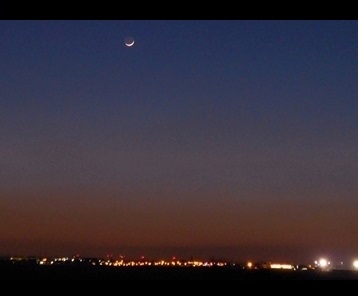 | Waxing crescent in twilight. The ashen light is visible (Nikon S3100 compact digital camera; outdoor observation location). picture site 'Amateur Astronomy' webmaster |
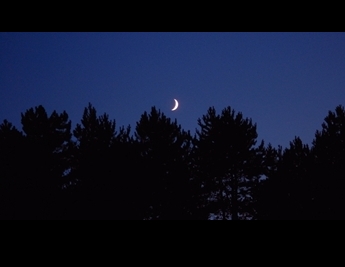 | Waxing Crescent close to moonset (Nikon S3100 compact digital camera; outdoor observation location). picture site 'Amateur Astronomy' webmaster |
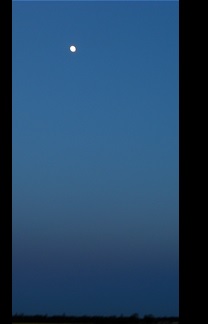 | Waxing Moon high East by sunset (Nikon S3100 compact digital camera; 5 pictures stacked; outdoor observation location). picture site 'Amateur Astronomy' webmaster |
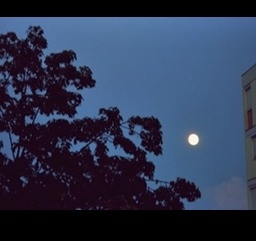 | Moon close to full is rising East (Nikon S3100 compact digital camera; home observatory). picture site 'Amateur Astronomy' webmaster |
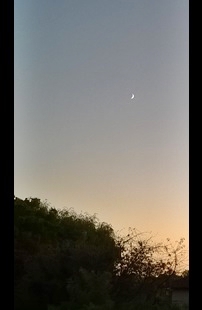 | A inspiring view of the first quartered Moon in western twilight! (Microsoft Lumia 535 smartphone; home observatory). picture site 'Amateur Astronomy' webmaster |
 Planets of The Solar System
Planets of The Solar System
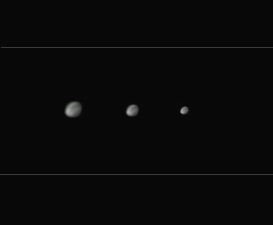 | Venus a evening star on Apr. 23rd, 2015. Some details are available (Perl 60mm refractor and a Perl Echorius 1.3 Webcam; picture stacked with RegiStax and edited with a image editor; home observatory). picture site 'Amateur Astronomy' webmaster |
 | Mars as of Apr. 13, 2014, five days after its 2013-2014 opposition. No detail is really obvious in a small instrument (Perl 60mm refractor and a Perl Altaos 0.35 Webcam; picture stacked with RegiStax; home observatory). picture site 'Amateur Astronomy' webmaster |
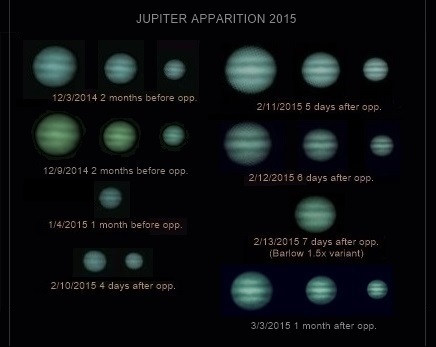 | Jupiter apparition 2015; pictures taken before the opposition are showing a little phase as the Great Red Spot is lacking contrast to be easily pictured in a small telescope (Perl 60mm refractor and a Perl Altaos 0.35 Webcam; picture stacked with Iris or RegiStax and edited with a image editor; home observatory. note: the 3/3/2015 picture with a Perl Echorius 1.3 Webcam). picture site 'Amateur Astronomy' webmaster |
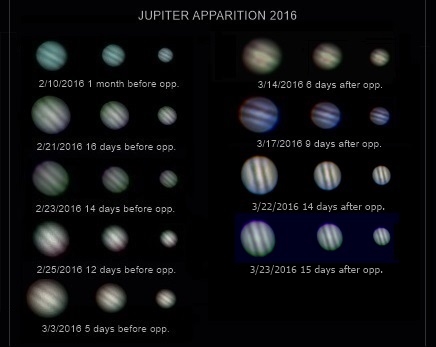 | Jupiter apparition 2016 (encours); pictures taken on 2/21/2016 are remarkably showing the Great Red Spot as some others are reaching to the best possible with a small refractor (Perl 60mm refractor and a Perl Echorius 1.3 Webcam; home observatory). picture site 'Amateur Astronomy' webmaster |
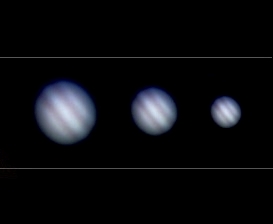 | Reaching to the limits of a 60-mm refractor with that variation of a same view of Jupiter, on 3/23/2016, as taken through a Barlow 1.5x. Details in the bands are not artefacts! Such a capture necessitates a very well tuned visor along with mastering the mount's azimuthal and altitudinal moves! (Perl 60mm refractor, Barlow 1.5, and a Perl Echorius 1.3 Webcam; home observatory). picture site 'Amateur Astronomy' webmaster |
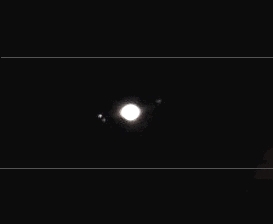 | Jupiter (overexposition not wanted) and its satellites; Io is missing as it is transiting in front of the gas giant (114mm refractor with a magnifiying power of 45x and a handheld Nikon S3100 compact digital camera; home observatory). picture site 'Amateur Astronomy' webmaster |
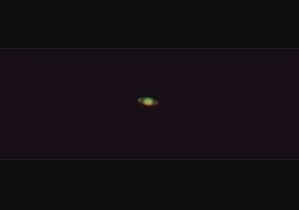 | Saturn as of August 31st, 2014, about four months after the opposition (Perl 60mm refractor and a Perl Altaos 0.35 Webcam; picture stacked with RegiStax; home observatory). picture site 'Amateur Astronomy' webmaster |
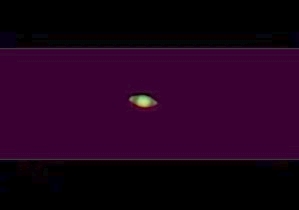 | Saturn as of August 31st, 2014, about four months after the opposition. Variant (Perl 60mm refractor and a Perl Altaos 0.35 Webcam; picture stacked with RegiStax; home observatory). picture site 'Amateur Astronomy' webmaster |
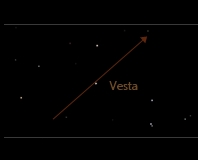 | Minor Planet Vesta seen on November 20th 2019 about one week after opposition, and the 6.6th magnitude; the direction of where Vesta is moving is pointed out as the minor planet was lying West of constellation Cetus, the Whale (Perl 60mm refractor; personal digital drawing technique; home observatory). picture site 'Amateur Astronomy' webmaster |
 Deep Sky Objects Drawings
Deep Sky Objects Drawings
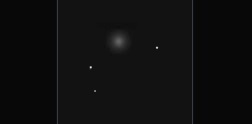 | M13 is a fine appearance in the field of a 60-mm refractor! (Perl 60mm refractor; personal digital drawing technique; home observatory). picture site 'Amateur Astronomy' webmaster |
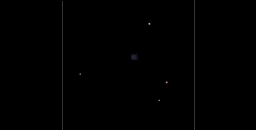 | M57, Lyra's Ring Nebula, at the 9.4th magnitude, is seen even with a 60-mm refractor! (Perl 60mm refractor; personal digital drawing technique; home observatory). picture site 'Amateur Astronomy' webmaster |
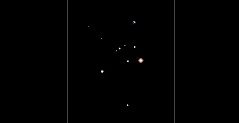 | Delta Lyrae Cluster, or Steph 1, is a fine sight, with sparkling stars! (Perl 60mm refractor; personal digital drawing technique; home observatory). picture site 'Amateur Astronomy' webmaster |
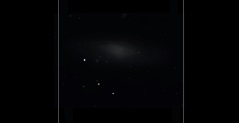 | M31, the Andromeda Galaxy, is a fine object as galaxy's arms are out of reach of small telescope. Of note however that its nucleus is at a angle relative to a very weak light from the general shape of the galaxy! (Perl 60mm refractor; personal digital drawing technique; home observatory). picture site 'Amateur Astronomy' webmaster |
 | NGC752, in constellation Andromeda, Andromeda, is a open cluster of the 5.7th magnitude as that little, large group of stars is a interesting view (the cluster is left of that picture) (Perl 60mm refractor; personal digital drawing technique; home observatory). picture site 'Amateur Astronomy' webmaster |
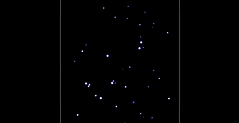 | M44 (or NGC 2632), Praesepe, or the Beehive is a large, bright, and rich open cluster in Cancer, the Crab as the view tends to overflow the field of view at a moderate magnification. Up to 200 stars may be seen down to the 14th magnitude. The cluster is resolved at some dozens of stars with binoculars as it's one of the closest to Earth at 450 light-years (Perl 60mm refractor; personal digital drawing technique; home observatory). picture site 'Amateur Astronomy' webmaster |
 Celestial Events
Celestial Events
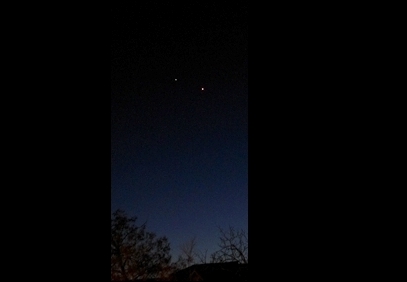 | Venus and Jupiter closing in March 2012 as twilight is transitioning into night (Nikon S3100 compact digital camera; home observatory). picture site 'Amateur Astronomy' webmaster |
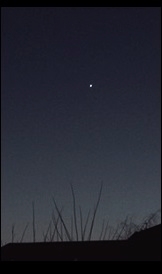 | Venus a evening star by early 2015, 3 months ½ before its greatest eastern elongation (Nikon S3100 compact digital camera; home observatory). picture site 'Amateur Astronomy' webmaster |
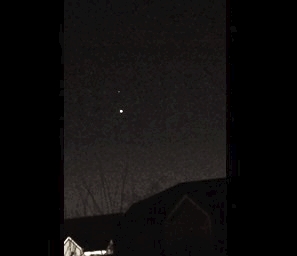 | Venus and Mars nearing a close of 25' on February 21st, 2015 (Nikon S3100 compact digital camera; home observatory). picture site 'Amateur Astronomy' webmaster |
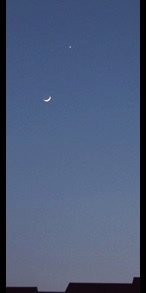 | Waxing crescent close to Venus in twilight on March 22nd, 2015 (Nikon S3100 compact digital camera; home observatory). picture site 'Amateur Astronomy' webmaster |
 | Venus close to the Pleiades on April 12th, 2015 on the western horizon (Nikon S3100 compact digital camera; home observatory). picture site 'Amateur Astronomy' webmaster |
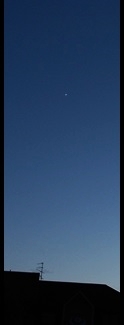 | Venus evening star one week after its most distant Sun, on May 27th, 2015 (Nikon S3100 compact digital camera; home observatory). picture site 'Amateur Astronomy' webmaster |
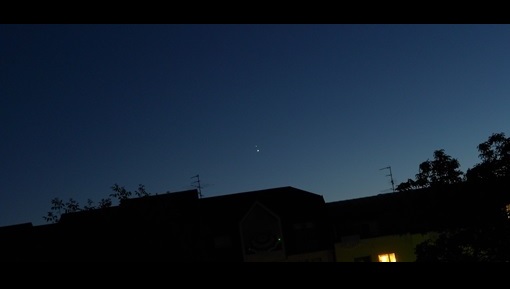 | A rare, 21-minute closeness between Venus and Jupiter on June 30th, 2015, by twilight (Nikon S3100 compact digital camera; home observatory). picture site 'Amateur Astronomy' webmaster |
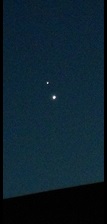 | A detailed view of the rare, 21-minute closeness between Venus and Jupiter on June 30th, 2015 in twilight (Nikon S3100 compact digital camera; home observatory). picture site 'Amateur Astronomy' webmaster |
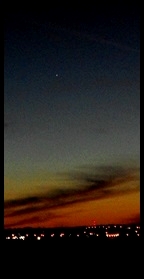 | A fine evening apparition of Mercury in the northern hemisphere by April 2016, among veil clouds (Nikon S3100 compact digital camera; outdoor observation location). picture site 'Amateur Astronomy' webmaster |
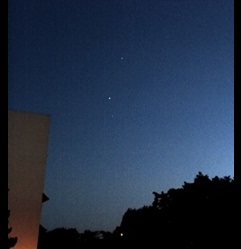 | Mars (bottom) closing Saturn (up) and Antares (the dimmest below Mars) by twilight on August 25th, 2016 (Nikon S3100 compact digital camera; home observatory). picture site 'Amateur Astronomy' webmaster |
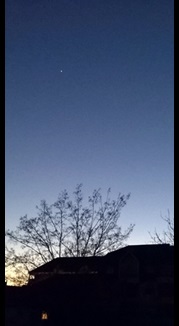 | A fine and elevated Venus like a evening star, one month ahead its greatest eastern elongation, by Feb. 24, 2020! (Microsoft Lumia 535 Dual SIM smartphone, home observatory). picture site 'Amateur Astronomy' webmaster |
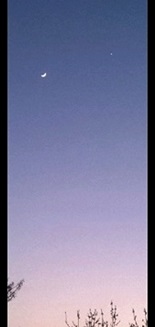 | First crescent close to a elevated Venus like a evening star, which is around its greatest eastern elongation, by Mar. 28, 2020! (Microsoft Lumia 535 Dual SIM smartphone, home observatory). picture site 'Amateur Astronomy' webmaster |
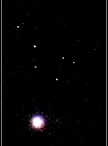 | Venus closing to the famed M45 cluster, or the Pleiades, on April 2nd, 2020 and to be among the cluster the next day! A rare sight! (Nikon S3100 compact digital camera; home observatory). picture site 'Amateur Astronomy' webmaster |
 Great Celestial Events
Great Celestial Events
 | The total solar eclipse of March 20th, 2015 seen like a important partial from France, the indentation seen by the end of the eclipse and a view of the luminosity variation (before, greatest and after the eclipse) (Nikon S3100 compact digital camera; outdoor observation location). picture site 'Amateur Astronomy' webmaster |
 | The total Moon eclipse of September 28th, 2015 was concerning a Moon at perigee as it was also the fourth -and last- in a series of four total eclipses with no partial in between, by 2014-2015. Generally a fine total lunar eclipse with the famed red hues at greatest (the image at greatest has been extrapolated)! (8x21 binoculars and Nikon S3100 compact digital camera; local astronomy club location). picture site 'Amateur Astronomy' webmaster |
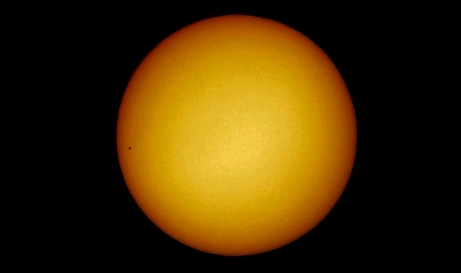 | The November 11th, 2019 Mercury transit using a compact digital camera handheld behind the ocular; the transit is seen few after it began (Nikon S3100 compact digital camera handheld at the 20-mm ocular of a Perl 60mm refractor with a solar filter in sheet at the instrument's aperture (yielding a 35x power); picture edited and colorized with a image editor; home observatory). picture site 'Amateur Astronomy' webmaster |
->More About the Webmaster's Observation of The Nov. 11, 2019 Mercury Transit!
The webmaster, from Dijon, France, had the opportunity to observe a few moments of the Nov. 11, 2019 Mercury transit! After instrumentation setup, he had about one half hour of fair skies, at disposal to observe and take photographs! Weather was windy on the other hand, and turbulence present. Such a transit is always a rare occasion to feel the greatness of the solar system. From France on the other hand, the phenomenon was to be interrupted by sunset
Website Manager: G. Guichard, site 'Amateur Astronomy,' http://stars5.6te.net. Page Editor: G. Guichard. last edited: 4/2/2020. contact us at ggwebsites@outlook.com

























































































































